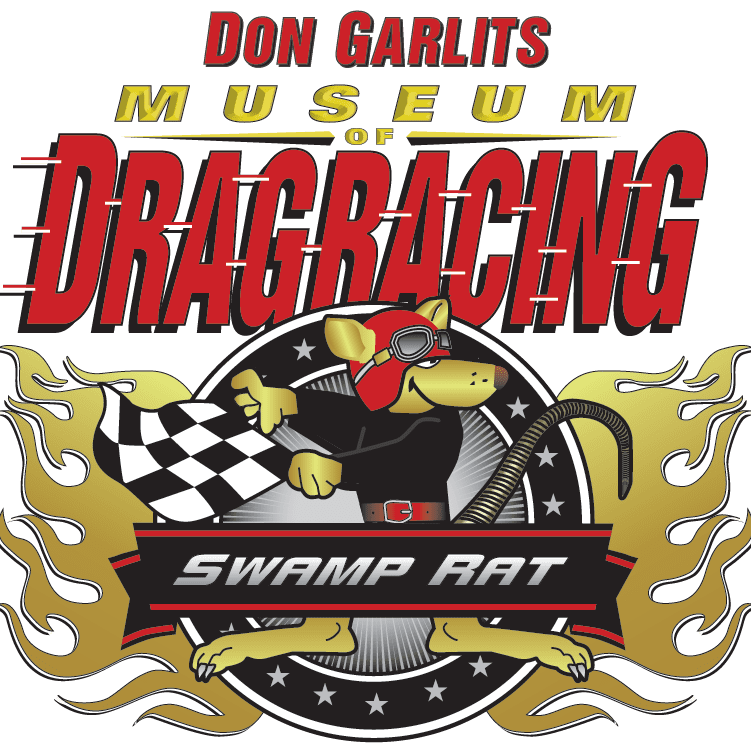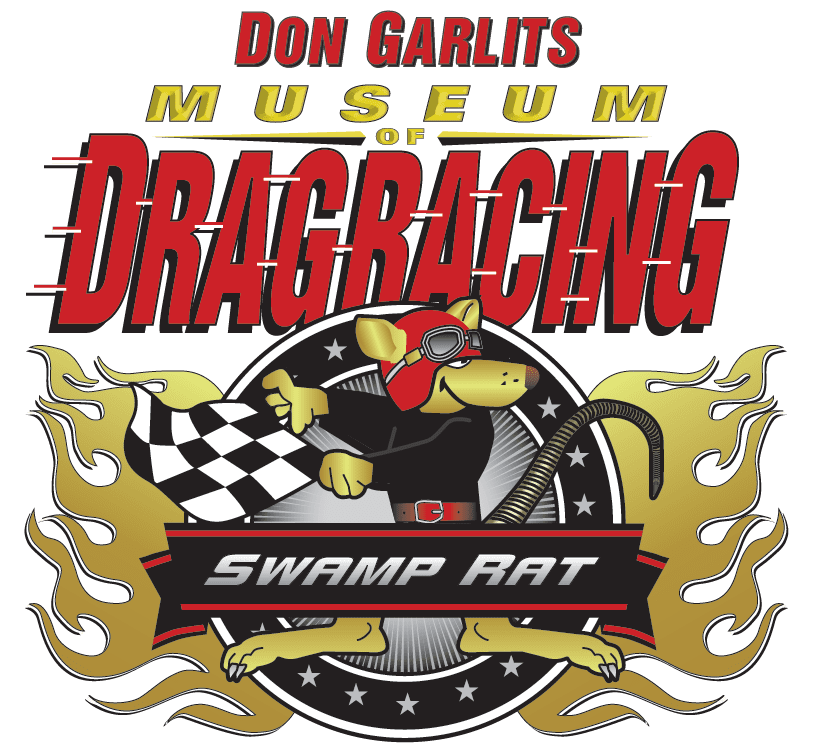2014
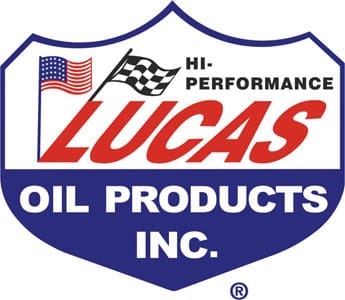
Event Sponsor Lucas Oil Products Held on Thursday, March 13, 2014 Paramount Plaza Hotel &
Suites, Gainesville Florida.
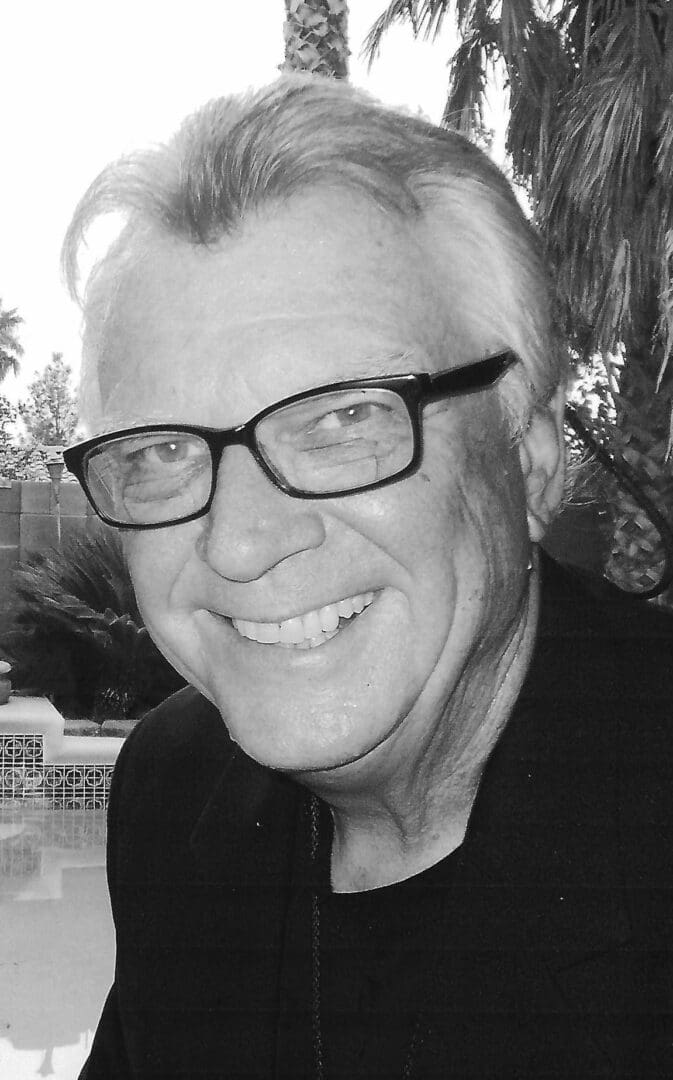
Kenny Youngblood
Founder’s Award
Kenny Youngblood grew up in the “hot bed” of the hot rod/Street racing/automotive love affair, in Southern California, after the end of World War II and was exposed to this element at a very early age. When he was 12, Kenny and his friend John Kaiser were treated to a day at the original San Gabriel Dragstrip and from that day forward he was hooked on the sport.
At this point in life, all the boys wanted to do was get behind the wheel of a car, any car. John’s dad really got them started by helping them build and maintain go carts to begin with then later assisting them in building a 354 cubic inch Chrysler powered B/Altered 1932 Ford coupe. From this point Kenny went on to build and drive to AA/Fuel dragsters over the years, along with either co-owning and or crewing on other various race vehicles.
While Kenny is known by some as a racer; most of his fans know him as a first-class artist. His first effort at artistry on a vehicle came when he did the graphics on his friend Gary Messengers dragster. Custom painter, Dick Olsen, saw the car and hired Kenny to handle the sign painting at his Bellflower, California shop. His stardom began a sharp climb within the racing community and it has continued to do so ever cents. Because of his last name, a lot of his pals called him “Blood” which is where his famous “Blood Did It” signature came from. Kenny enjoyed the steady work, painting signs and doing graphics for a lot of the top race cars of the day. It was promoter Bob Kachler who encouraged him to turn his skills to canvas and become a true artist.
As his reputation and popularity as an artist grew and he did more and more designs of race cars and paintings from major racing publications. The really big boost in visibility came when he designed the interlocking ZZ logo for the group ZZ Top. He applied it to Billy Gibbon’s Eliminator 1934 Ford coupe that was featured on the group’s famous Legs video and on millions of record albums.
It was around this time that Kenny really became serious about devoting his talents to painting “automotive portraits” that would find a place on some very prominent walls with more and more enthusiast buying and appreciating his paintings and prints. Kenny was able to extend his visionary talent into producing some of the most memorable one-of-a-kind works. This popularity also afforded Kenny the opportunity to open the Youngblood Motorsport Gallery in Orange, California in 1993. He not only displayed his own work, but also gave other artists the opportunity to show off their talent.
All of this success and time have not slowed Kenny down, nor has it dulled his love of the sport. He operates out of his studio in Las Vegas. But more often than not, he is on the road making personal appearances at car shows, trade shows, or NHRA events. Besides painting, making the appearances, and on occasion lending a hand to a needy race team, Kenny also has a website, “Fuel Coupe Magazine” that is dedicated to nostalgia funny cars
In addition to the awards and accolades Kenny has received, he is affectionately known as “The Father of Modern Race Car Designs” a title that is well-deserved.
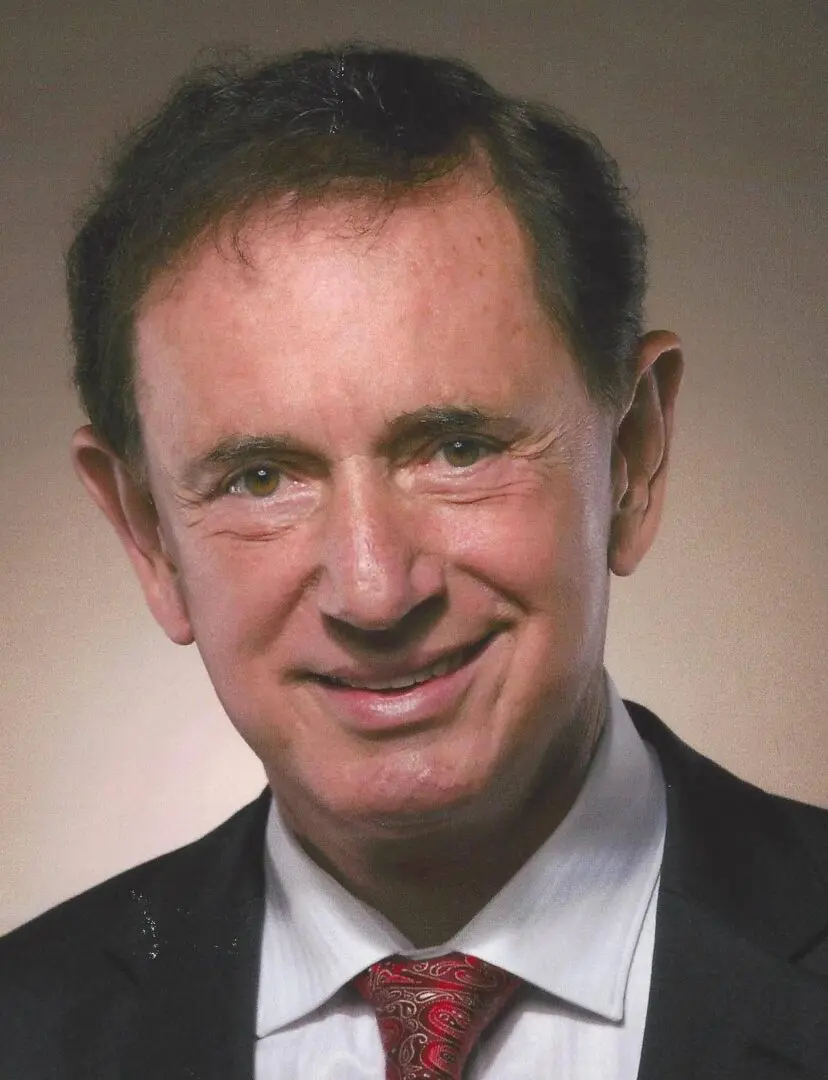
Forrest Lucas
While Forrest always loved all forms racing, his first participation as a driver came in 1986, when he began shoeing his I-4 modified stocker on the short tracks in Southern California. His love of racing was just one part of his reasoning behind participating as a competitor. By the time he first climbed into the cockpit of a race car, he had also found another passion when he and his wife Charlotte founded Lucas Oil Products. Short on promotion funding and needing to promote the company to the public he combined the two loves and put Lucas Oil Products in front of the buying public, with the company logo displayed on all sides of the race car.
After spending three years as an active competitor, the business had grown to a point that it required most of his time. So, he retired from driving and devoted his efforts to building the company and providing financial support to some of the racers. While the company was continuing to grow at a steady pace; Forrest knew he needed to provid stronger promotional support in order to keep it moving. At the same time, he was taking note of the growing number of major companies who were using racing as a prime way of promoting their products.
In 1994 Forrest took his son Morgan to his first drag race at the age of 11 and it was love of at first sight for them. This soon led to Forrest adding more drag racing teams to the companies sponsor list and race facilities sponsorships. Because of his love of all forms of racing, Lucas Oil was soon sponsoring race teams operating in all forms of automated racing as well as boats, planes, and motorcycles.
Because of the financial support provided by Lucas Oil dozens of race teams, a lot of racers who were thinking of closing down their operations, are still competing around the nation and providing entertainment for millions of fans each year. The same can be said for several race facilities that were facing closure for lack of adequate funding. Because of the additional support in this area from Lucas oil they continued to operate. In addition to supporting all of the race teams in race facilities, Forrest also made it a point to support the various sanctioning bodies involved in all forms of racing.
Both Forrest and Charlotte live and breathe everything they sponsor or sanction and don’t limit their appearances to just drag racing. They also attend events featuring other types of vehicles plus a few car shows and trade shows thrown in for good measure.
In 2006, Forrest expanded the family involvement in all forms of sports, but he keeping racing as a focal point when he opened a television production studio at the company’s headquarters. They now produce more than 350 hours of television for all of the major channels from this location. Still not content with his involvement in bringing all forms of entertainment to millions of viewers, in 2011, he purchased the cable network MAVTV and renamed it MAVTV American Real. In addition to the Lucas Oil logo appearing on racing vehicles around the country, the MAVTV logo, along with its sponsorship funds. Lucas Oil is starting to be found on more and more race vehicles and more facilities. Forrest has made a commitment to the sport that MAVTV will offer its viewers a large portion of its programming that revolves around racing and the automotive world in general.
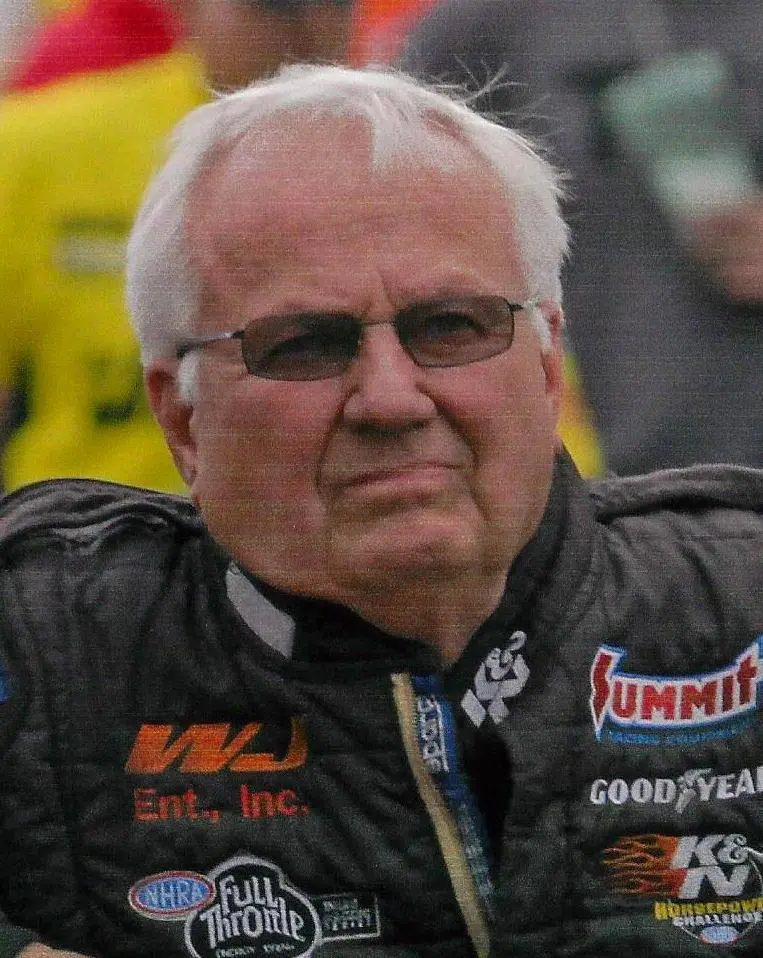
Warren Johnson
Warren “The Professor” Johnson was born in Virginia, Minnesota an area that wasn’t known as a hot bed of drag racing, but the professor took advantage of the semi isolated conditions. While spending his days at work in a steel fabrication shop, he was enrolled in engineering classes at night. Warrens interest in cars and racing began around the age of 10 and he purchased his first car at 14, a 1949 Chevy.
By 1961 he had managed to put together a 1957 Chevy C/MP car in which he began his climb to fame and notoriety. In 1971 he was able to purchase a new Camaro, which he promptly stripped down and outfitted to meet the newest NHRA Pro Stock class. His first outing was a less than spectacular debuting at the 1971 NHRA US Nationals in Indianapolis. The experience made him more determined than ever to be in the winner’s circle. He and wife, Arlene, along with their son, Kurt, spent the next several years competing with the Camaro whenever and wherever they could. During this time, Warren was also building race engines for his competitors to finance his own drag racing endeavor and learning more about engine development as he went. In 1975 Warren added an “evil handling” Chevy Vega pro-stock car to his stable and it was the combination of the Vega, the backwoods track he competed on, and his desire to win that help make him into one of the greatest pro-stock builders and drivers ever.
1975 was the year that 32-year-old Warren made the decision to become a professional drag racer. With no sponsorship and very little available funds, he entered the NHRA Pro Stock arena. In 1976 Warren was able to finish in runner-up position for the NHRA Winston Pro Stock Championship, all while competing with his home built 1972 Camaro. From 1979 to 1981 Warren competed on the IHRA pro-stock circuit where he won back to back IHRA Pro-Stock Championships. To help with finances, he also barnstormed on the pro-stock match race circuit where he picked up additional knowledge about engines, suspension, and driving.
In 1982 NHRA replaced its old complex pro-stock roles with a straightforward formula of weight to inches. Warren again entered the NHRA Pro Stock war and notched his first national event when at the 1982 Summernationals in Englishtown, New Jersey. When Oldsmobile decided to launch a serious drag racing program in 1983, Warren was the person they contacted to develop the engine/program. It was Warren who reworked the big block Chevrolet V-8 to create one of the strongest and most durable power plants available. That engine, the drag racing competition engine, still remains the foundation of GM’s pro-stock engine program.
Warren won his first Winston Championship title in 1992 and literally dominated pro-stock in the 1990s winning championships in 1992, 1993, 1995, 1998, 1999, in 2001. The man who is affectionately known as “The Professor” has one a total of eight championships (six with NHRA and two with IHRA). In 1997 Warren became the first NHRA pro-stock competitor to exceed 200 MPH with a run of 200.13 MPH and the first with a sub 6.90 ET with a 6.89 second ET at Richmond Virginia. In 2006 he notched his 500th career race victory.
In 2007 Warren was inducted into the international Motorsports Hall of Fame. Later he was honored as one of drag racing’s 50 greatest drivers. In May 2010 he became the oldest professional national event winner in NHRA history by winning the Midwest Nationals in Madison, Illinois, at the age of 68. Along with these honors Warren was inducted into the NHRA Division 2 Hall of Fame in 2011, the Georgia Racing Hall of Fame in 2012, the Legends of Bristol Hall of Fame in 2013, and is the third winningest driver in NHRA competition. Warren has also contributed a lot toward the safety and reliability of pro-stock with his constant innovations which include: using a funny car cage, the seven point and nine-point seatbelts, and several engine/suspension modifications to name a few.
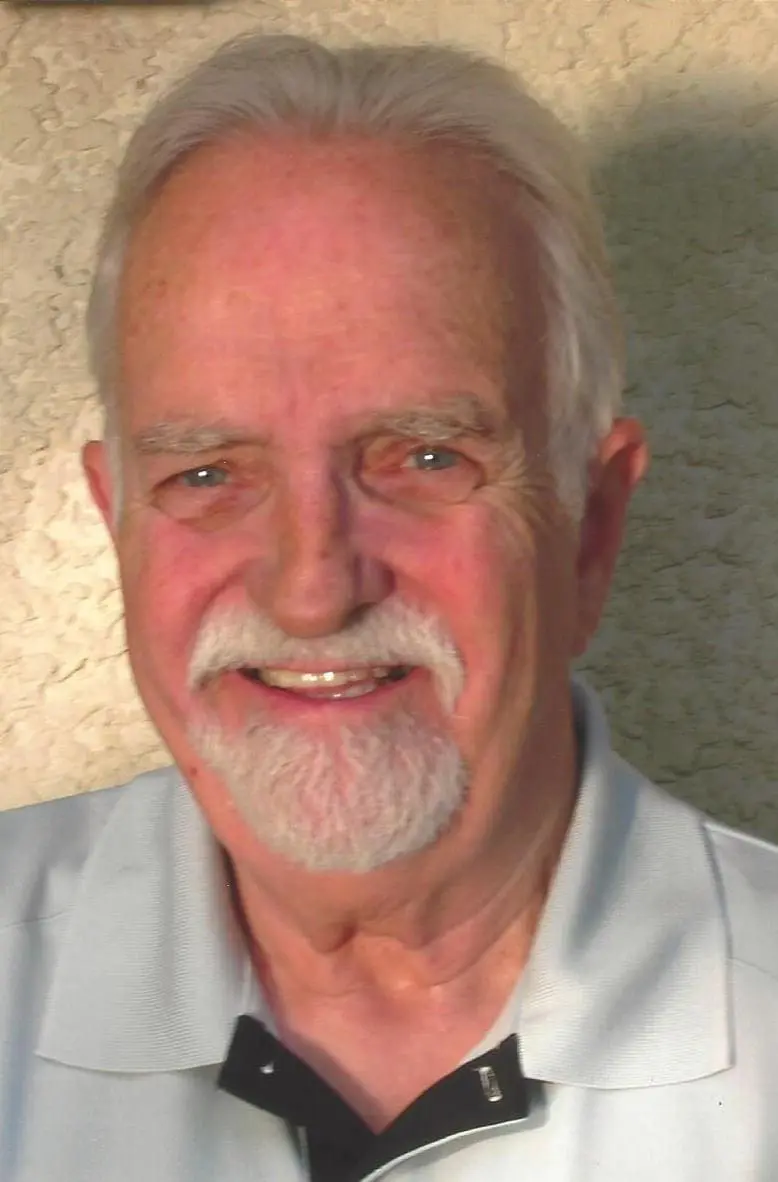
Tom Hoover
Even as a teenager, Tom Hoover wanted to compete in the drag racing arena. His first car was a 1959 Chevy that provided his daily transportation, but when he was 21, he purchased his first race car, a gas-powered chassis research dragster kit car. Before long his desire to be more competitive, to go quicker and faster took over, so he purchased Bruce Norman’s Big Wheel Chrysler powered AA/Fuel dragster. Tom’s enthusiasm and desire to go racing soon caught the attention of his mom and dad, George and Ruth Hoover, and before long the entire family was a team on a regular basis. Tom scored his first major top fuel when at the 1965 AHRA Winter Nationals in Phoenix Arizona; followed by his winning top fuel in NHRA’s West Central Division that year with Pa Hoover doing the mechanical chores and Ma Hoover taking care of the business side of the endeavor.
In 1965 and 1966 Tom suffered several severe engine explosions/fires with the Chrysler Hemi engines. He switched over to the newly released single overhead cam (SOHC) Ford engine and along with Connie Kalitta, Pete Robinson, and Don Prudhomme they were very instrumental in its racing development and success. In 1970 Tom decided to make the switch from competing in the AA/Fuel dragster wars to driving Bill Schifisky’s White Bear Dodge AA/Fuel funny car. While Tom was competing in the White Bear Dodges; his mom and dad continued competing with the dragster. In 1972 when it became apparent the dragster team was having better success with less breakage the family decided to rejoin forces again as a single team and concentrate on running funny cars. With this decision made, they purchased Ed Willis’s Plymouth Satellite and debuted the first of their now famous “Showtime” series of cars.
In 1974 Tom married his wife Betten. Betten has been involved in every element of Tom’s success; from staging of the car in the early days to doing all of his press coordination, the necessary bookwork, and financial manager of his racing endeavors.
Tom scored his first funny car NHRA national when in 1977 at the NHRA Grand National event in Montréal Canada, followed by the 1979 NHRA Winternationals in Pomona, California. In 1980 Tom crossed the ocean to compete in AA/FC meets in England while driving Raymond Beadle’s car. During the 80s he raced in England at several competitions per year where he co-owned and campaigned an AA/FC with noted English driver, Wild Bill Sherratt. Tom returned to the AA/Fuel dragster driving chores during the late 80s when he flew to numerous matches in both Sweden and Australia. In 1995 he drove Jim Reed’s number two AA/Fuel dragster to the winner’s circle at the Australian Top Fuel Nationals in Melbourne in what is equivalent to the US Nationals and consequently the World Championship here in the states.
In between his racing overseas Tom continued his NHRA funny car competition and was successful. In 1992 Tom won the NHRA Fall Nationals in Phoenix, Arizona, the 1993 NHRA Autolight Nationals in Sonoma, California, and the 1997 NHRA Pontiac Excitement Nationals in Columbus, Ohio.
Tom decided in 1998 it was time to retire as a driver and become a funny car team owner. So, when the 1999 season opened, the Hoover clan was at the track with a new Chrysler powered Dodge Avenger AA/Funny car. Tom and dad building and tuning and Corey Lee driving.
Sandwiched in between all the NHRA, AHRA, and IHRA national events over the years was a full complement of match races that sometimes include two or three such events per week. Keeping the family on the road much the time. Tom and Betten’s son and daughter, Leighe Paige and Landon, traveled with the team keeping the family together even when competing as in faraway countries. Tom’s two older boys, Trent and Troy, also accompanied them to as many events as possible thereby keeping the Hoover family legacy as a drag racing family intact.
Tom earned positions into to the prestigious Five Second Club and later into the Castrol Four Second Club. Was Car Craft Magazines 1979 All-Star Racing Team Funny Car Driver of the Year. In 1997 at the NHRA Winston Championships Award Ceremony he was honored by receiving the Blaine Johnson Award. In 2012 Tom was honored as the Grand Marshal at the 10th Annual NHRA Bowling Green Hot Rod Reunion.
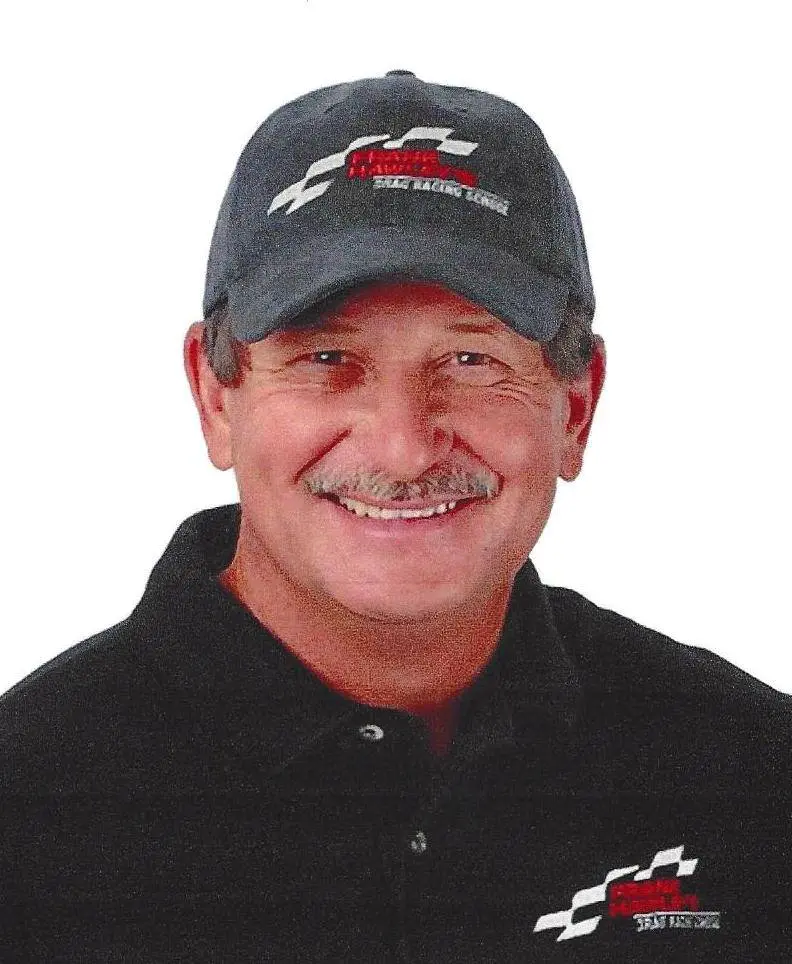
Frank Hawley
Growing up on a farm outside of Ontario Canada, where he had plenty of “open space” Frank Hawley started his driving career at the ripe old age of four years old behind the wheel of his 5 hp powered go- cart. Since the go-cart was purchased as a “kit kart” he also got his first lessons as a mechanic at the same time by helping put it together. After hundreds of laps in a couple of years, the family moved to the city. When Frank was nine years old, one of his sister’s boyfriends took him to his first drag race at Thompson Dragway. Here he had his first exposure to the fire, sound, and smell of burning nitro watching a pair of AA/Fuel dragsters match race and he was immediately hooked. Frank says that was when he decided that driving one of these cars was what he wanted to do to make a living.
Shortly after that he bought his first automotive magazine, Car Craft Magazine, with the Frantic Four featured on the cover (which he still has today). This fanned his interest in drag racing as a career even more. Soon his dad joined him at more and more races as a spectator. After a few years, as just spectators, Frank heard about an opening as a photographer at the local dragstrip. With no equipment or experience, but with the desire to become more involved with the sport and the racers, Frank and his dad applied for the job and got it. After purchasing the camera equipment needed and teaching themselves how to use it the pair soon were taking the photos, writing the stories, and handling the PR for the track. Apparently, they were doing a great job because before long they were hired by the local circle track owner to do the same work for him.
While working at the race track, Frank learned that one of the local racers, Keith Riddler, was selling his ex-Garlits AA/Fuel dragster; after a lot of thought his dad bought it. At the age of 16 years old, Frank became his dad’s partner and the driver of an AA/Fuel dragster. They knew nothing about how to run it and were without a garage, tools, or even a tow vehicle. Frank’s first vehicle would be an old Dodge pickup truck that would be used to haul their race car. With the help of several friends, including Wayne Hartley, they were able to put together a functioning race team and campaign the car at every NHRA, IHRA, and local match race events they could. Overall, they owned three front engine top fuel dragsters, but eventually switch to alcohol funny cars in order to afford to race more often. In 1977 and 1978 he campaigned a BB/FC sponsored by “The Poppe Shop” and in 1979 he was at the wheel of a blown Hemi powered 1923-T roadster that carried him to the finals at the IHRA Nationals in St. Louis.
By winter of 1979 it was obvious Frank and his dad were not going to be able to continue racing as they had been, so they sold everything and Frank headed to California to look for work and started sending resumes to various race teams at the same time. After six months of no luck with finding a job Frank called home to tell his mom that he was about to give up on a career in racing. His mom told him to not give up and that he had received one response to his resumes from a gentleman looking for a driver, his name was Austin Coil.
In 1980 Frank Hawley became the official driver Austin Coil’s supercharged Chrysler power nitro funny car “The Chi-Town Hustler”. There were some who didn’t believe Frank could step from an alcohol car into a nitro burner and do a good job. He soon proved them wrong. In 1982 they were the number one qualifier at the NHRA Winternationals in Pomona, California. At the very next race, the NHRA Gatornationals in Gainesville, Florida he gave the team its first ever NHRA national event win. He closed out the year by winning the inaugural Big Bud Shootout at the US Nationals in Indianapolis, Indiana. They had enough points at the end of the NHRA World Finals in Pomona, California to lock up his first NHRA World Championship.
1983 proved to be an even better year when he drove to victory at the NHRA Winternationals in Pomona, the NHRA Gatornationals in Gainesville, the NHRA Southernnationals in Atlanta, Georgia, and the NHRA Mile High Nationals in Denver, Colorado. He also dominated the Super Stock Magazine Nationals in Reading, Pennsylvania, and the Popular Hot-Rodding Magazine Nationals in Martin, Michigan. The team finished the season with a second NHRA World Championship trophy.
Like a lot of the early pioneer racers, Coil ran the Chi-Town Hustler on a limited budget and at the end of the 1984 season, Austin made the decision to disband the team. Austin agreed to become crew chief for Jon Force. After much thought and preparation in 1985 Frank opened the doors on the first truly dedicated drag race driving school, Frank Hawley’s Drag Racing School, in Gainesville, Florida. The school stayed busy and a few years later opened a second school in Pomona, California. The curriculum of the school includes classroom instruction and on track instruction in alcohol dragsters, funny cars, super comp dragsters, super gas door slammers, and pro-stock motorcycles. In 2014 the school launched the “Dragster Adventure”. A program that gave customers, that are looking for an exciting drag racing experience, the chance to race a dragster in side-by-side competition without investing the time and resource it takes become an NHRA licensed driver. Since opening the doors for the first time, Frank has seen over 25,000 students graduate with some of today’s well-known drivers among them.
Not through with driving, in 1985 Frank climbed behind the wheel of Larry Minor’s AA/Fuel dragster, which he drove to runner-up spot that year at the NHRA Fall Nationals in Dallas, Texas, and the 1989 NHRA Cajun Nationals in Baton Rouge, Louisiana. In 1990 Frank took over as the driver of Darrell Gwynn’s top fuel dragster and promptly won the NHRA Springnationals in Columbus, Ohio, won the NHRA Fall Nationals in Dallas, and was runner-up at the NHRA Sonoma Nationals in Sonoma, California. Frank’s last year for the Gwynn family was in 1991.
Not finished with his career behind the wheel in 2007, Frank was offered a chance to drive in the big leagues again when he was named the driver of the “Rite-Aid Pharmacy” nitro funny car for team owner Roger Burgess. With crew chief Aaron Brooks, Frank picked up where he left off, setting records and winning rounds. Frank’s last race in the nitro funny car came in Charlotte North Carolina, and produced a number one qualifying spot and at that time, the fastest funny car speed ever in 1000 foot drag race.
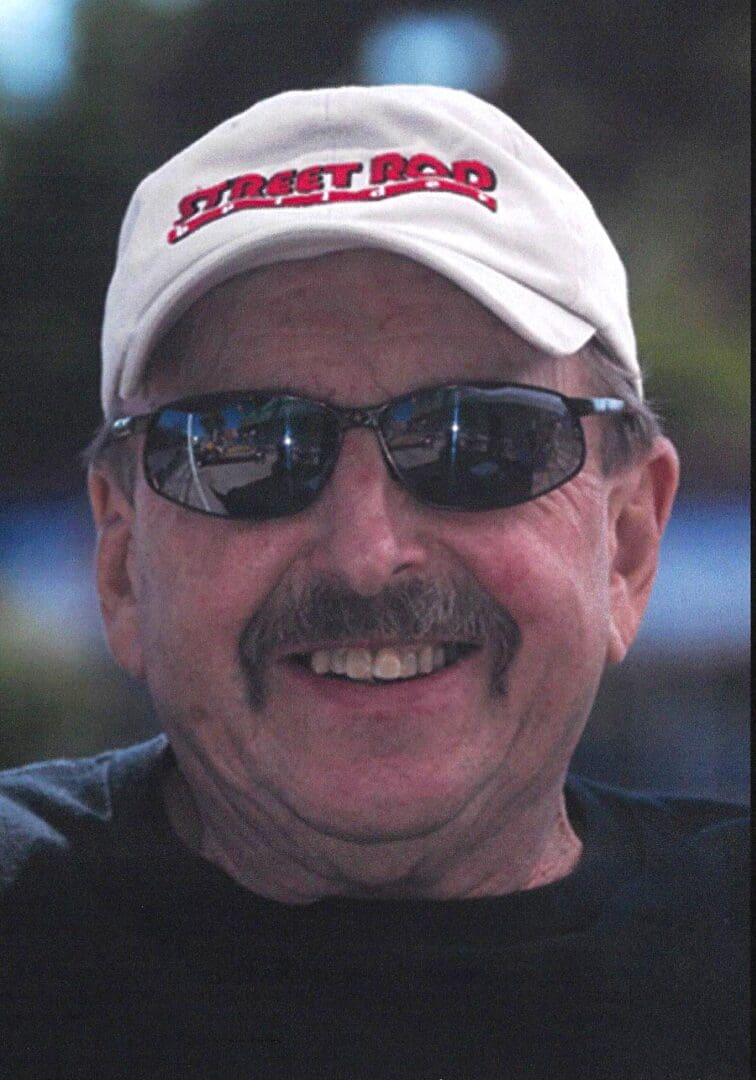
Al Bergler
Yes, Al Bergler is a racer but he is also much more. Al is a master craftsman who earned a reputation in several areas within the hot-rodding arena. Al grew up in the automotive city of Detroit. In 1958 he started his participation in the performance arena by building his first hot rod in his parents’ garage. He chopped the top of a Model A Ford coupe, channeled the body over the chassis and installed a 392 cubic inch multi-carbureted Chrysler Hemi for power. His drag racing career began shortly after completing the coupe/roadster and continued with a Chrysler powered 1934 Ford coupe. Already bitten by the speed bug, in order to go quicker and faster in 1959, he built a sleek rear engine modified 1950 Crosley wagon powered by a blown 392 cubic inch Chrysler Hemi. Al’s next ride was the first in a series of Austin Bantam coupes. One a highly modified A-B body mounted on a Chassis Research Dragster chassis and was powered by his reliable blown Chrysler Hemi engine. 1964 saw the introduction of his newest Austin Bantam coupe. This time mounted on a purpose built Logghe chassis and featuring a blown 392 Chrysler on gas for power. With this car Al won Super Eliminator and Best Appearing Car at the 1966 NHRA Springnationals in Bristol, Tennessee and was Super Eliminator class runner-up at the 1966 NHRA World Nationals Finals in Tulsa, Oklahoma. This car also provided a very rare achievement for Al when it became one of the very few race cars to win the coveted Riddler Award in 1964.
From the beginning of the 1967 season Al produced another of his unusual AA/C cars. This time a 1923 T- roadster body mounted on a Logghe chassis with his blown 392 cubic inch Chrysler on gas for power. Al debuted this car at the 1967 NHRA Winternationals in Pomona, California and promptly took home the class winner trophy along with the Best Appearing Car Award. He later drove this car to runner-up in the Super Eliminator class at the 1967 NHRA Springnationals in Bristol, Tennessee and the 1968 NHRA World Finals in Tulsa, Oklahoma. He added Super Eliminator class wins at both the 1968 in 1969 NHRA US Nationals in Indianapolis, Indiana. For his appearance at the 1968 NHRA Winternationals Al added a full driver canopy that enhance the cars appearance. In 1970 Al switch classes to AA/GD and dropped his blown Chrysler into a full-bodied Logghe chassis and managed to race to the runner-up slot at the 1970 NHRA Summernationals in York, Pennsylvania.
With the upcoming demise of AA/GD class the nitro burning funny cars were able to produce a much greater income. In 1971 Al teamed up with Tom Prock, as the driver, and moved into the funny car ranks with a Vega body mounted on a Loghee chassis. Along with his changing car classes Al changed his powerplant to a supercharged injected late-model Ramchargers 426 Chrysler Hemi on nitro; that was billed as the “Motown Shaker”. Al and Tom competed at as many NHRA major events as time permitted, but the mainstay of the day was match racing and they competed in his many as three races per week.
Over the next few years the Motown Shaker handle appeared on a series of funny cars that Al campaigned. The 1972 Motown Shaker still featured a Loghee chassis with a new Vega body. But this time with a Keith Black 426 Chrysler for power and a new driver Butch Mass with Al substituting for Butch on occasion. In 1973 the Vega received a new paint scheme and Al returned to the driver seat full time. The 1973 NHRA Gatornationals was a good news bad news event for Al. The good news was he qualified well into the show and won the Best Appearing Car Award for the event. The bad news was the car was completed destroyed in a semifinal event fire. The 1974 Motown Shaker was simply an update of the 1973 car. The 1975 car had the Vega body replaced with a Mustang body. As a part of the regular match racing schedule Al was also one of the featured cars of the Coca-Cola Cavalcade of Funny Cars Tour.
In 1977 Al replaced the Mustang body by returning to the General Motors stable installing a Corvette body which lasted through 1980 when he replaced it with a Firebird Trans Am body. With the addition of more NHRA national events and fewer match race dates available, in 1982 Al sold the race operation to a fellow in Sweden and retired from active racing.
While he may have been retired from drag racing Al never stopped working in a shop. He still builds some of the most beautiful bodies and parts available. In 2002, Ed Golden bought the Probe AA/FD dragster and took it to Al for an update. In 2003, when NHRA introduced the cackle fast program at the Hot Rod Reunion in Bowling Green, Kentucky Ed offered the driver seat to Al; which he immediately jumped into. Today many of the restored cackle cars have made the journey to Al shop before going to the paint shop.
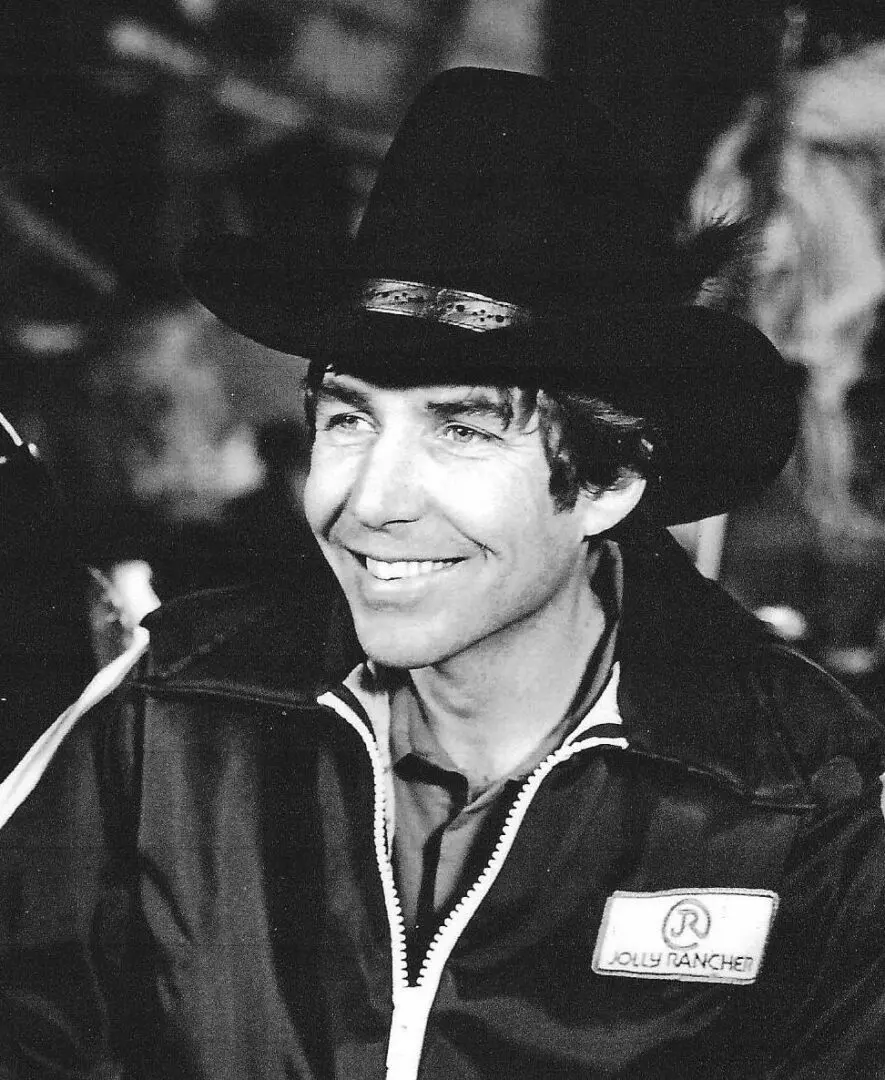
John Abbott
Jon Abbott grew up in Denver Colorado in the drag culture of the era. He highly respected the likes of Kenz & Leslie and their Bonneville streamliner. Jon Bandimere Sr. famous for supercharged engines and Bandimere’s supercharged Cadillac powered GMC pickup. By the time he was 13 years old he was dreaming of being involved in the sport and following in the footsteps of the aforementioned prominent racers that called Colorado home. When he was 15 years old his uncle helped him purchase a 1942 Ford four-door Army staff car and install a 1951 Ford 8BA 239 cubic inch flathead in it. Like many youngsters starting out in the sport John’s powerplant grew in stages, milling the heads, then adding dual carbs and so on. The 1942 was followed by a 1947 Mercury convertible that wasn’t especially fast, but it was “cool”. However, living up to the “racer code” it wasn’t long before that was replaced with a 1940 Ford sedan with a bigger and more powerful Ford 276 cubic inch flathead V-8. In 1953 John joined a local car club, “The Drag-on’s”, and in 1955 he and several high school friends attended the Nationals in Great Bend, Kansas. John never questioned what he wanted to do for the rest of his life, he wanted to go racing.
After his discharge from the Navy in 1959, John bought a 1950 Chevy Coupe powered by the factory tri- powered 348 cubic inch engine that was very competitive around that era. Being a typical gearhead, it wasn’t long before that combination was too tame. So, John decided to design and build his own dragster chassis and install a highly modified 331 cubic inch Chrysler Hemi on gas with periodic attempts on nitromethane for power. John campaigned this car successfully locally during the 1961 and 1962 seasons. He was also following what was happening across the country as far as the speed and ET’s. So, in the winter of 1962 he had a couple buddies build him a new chassis while John was putting together a 400 cubic inch 6:71 blown nitro burning Pontiac engine for its power. This combination worked well for John and he was able to run as fast as 190 MPH in Denver’s rarified air and at the same time pickup his first major sponsor which helped him see an even greater future in the sport.
As much success as John had with the Pontiac powerplant he knew that to be competitive in this arena he would have to make the move to a Chrysler Hemi. So, in 1966 he teamed up with his friends Jerry Keating and Bobby Geer to field a new Woody car. Bobby built and painted the sleek full body and John built the blown 392 Chrysler Hemi engine. The trio unveiled the new car for its maiden run and were able to set a new Colorado state ET record of 7.42 seconds. Always looking to go quicker and faster to be more competitive in mid-1967 John dropped his Chrysler powerplant into Ernie Spickler’s RCS built chassis and immediately became the team everyone in the area wanted to beat. As successful as the team was, Ernie had a business to run, so John put together a program with Mark Williams whereby Mark would supply a completed new car and John would supply the rest of the items needed to go to racing. In 1968 John was one of two Colorado and two Texas cars that teamed up as the United States Drag Racing Caravan to tour Kansas, Oklahoma, and Texas putting on match races.
Over the next couple of years John continued to compete in a semi local arena (Kansas, Texas, Nebraska, Colorado, and Utah) and in 1973 he switched over to his first rear engine car. He really wanted to compete in the national arena so in 1976 he took on the driving chores for the team of Frazier and Williams in their rear engine, late-model Chrysler hemi powered, MW Enterprise top fuel dragster. John was able to post a win at the big UDRA race in Saginaw, Michigan.
1977 proved to be a better year for the team, which by this time consisted of just Larry Frazier and John. They were able to notch wins at the Popular Hot Rod Magazine Meet in Martin, Michigan, the IHRA US Open in Rockingham, North Carolina. They were runner-up at the IHRA World Nationals in Amarillo, Texas and the High-Altitude Nationals in Pueblo, Colorado. They also qualified number one at the NHRA World Finals at Ontario Motor Speedway at 5.88 seconds.
In 1978 the team had acquired major sponsorship from Jet/X and was able to continue racing on a national basis. That year they finish number five in both NHRA and IHRA point standings. They returned to defend their title at the Popular Hot-Rodding Championship at US 131 in Martin, Michigan only to lose to Don Garlits in the final round. They continued with wins at the IHRA Spring Nationals in Bristol, Tennessee and the NHRA Winston Championships series in Brainerd, Minnesota. Thet appeared in seven top fuel final rounds that season.
They kicked off the 1979 season with a win at the AHRA Winter Nationals in Tucson, Arizona. But their sponsor funding wasn’t coming on a regular basis, so Frazier opted to retire at this point leaving John without a ride. True to form this situation didn’t last long when John was able to buy Jake Coughlin’s retired top fuel dragster. John spent the rest of the season competing at NHRA and IHRA national events from coast to coast, finishing in the final round seven times and winning three. He ended up finishing number nine in NHRA, number eight in IHRA, and number eight in AHRA point standings.
1980 found John with a new sponsor, the Jolly Rancher Candy Company, that allowed him to continue to compete on a solid basis. This resulted in his winning the Crown Auto Parts race at Brainerd Minnesota and qualifying number three at the US Nationals with a 5.82 second ET at 246.45 MPH.
In 1981 John had greater success winning the NHRA Winston World Championship meet in Denver, Colorado. He competed in the final round of eliminations six times. Notched wins at WWCS in Denver, Colorado, WWCS in Brainerd, Minnesota, the Quaker State Oil Championships at Brainerd, Minnesota, and the NHRA US Nationals in Indianapolis, Indiana. He set low ET at the World Finals at Orange County international Raceway with a 5.63 second ET and became the eighth member of the Cragar 250 MPH Club during the US Nationals. John was runner-up at the WWCS event at Maple Grove, Pennsylvania and also the Nitro Knockout in Denver, Colorado. The NHRA points championship that year came down to the final race of the season with John finishing number three behind Jeb Allen and Gary Beck.
In 1982 John finished number five in the AHRA Grand American series, picked up a runner-up finish at the AHRA Summer Nationals in Kansas City, a runner-up finish at the AHRA World Finals in Spokane, Washington, and won the Fuel Nitro Knockout Championship in Denver.
After that John began winding down his participation, but still notched two wins, a number eight points finish in the 1983 AHRA Grand American Series, and number 13 in the 1983 NHRA Winston Championships series. After 23 straight years of top fuel racing, in 1984 John competed at Denver, Tucson, and Tulsa. John held onto the intension of ending his career as being an active team owner and driver. This finished over 31 years of total racing. The first eight years with performance street rods and the last 23 years and fuel dragsters.
In the July 1982 issue of Car Craft Magazine, John was featured in a rare top fuel car center spread article and was the featured car on the cover of National Dragster multiple times starting in 1964. John was inducted into the Colorado Motorsports Hall of Fame in 2006, received a Lifetime Achievement Award at the NHRA Hot Rod Reunion in Columbus, Ohio in 2007, and was inducted into the NHRA Division 5 Hall of Fame in Kansas City, Missouri in 2009. While John retired as an owner driver the rest of the Abbott clan is carrying on what John started. His son Jon Jr and his wife, Sondi, campaigning twin top dragster class cars. Grandson Christopher working as crew man in the top fuel ranks and granddaughter Caylynn driving a junior dragster winning the JD-2 Points Championship at Bandimere Speedway in 2013. John’s oldest daughter Carrie broke with family tradition and is a world acclaimed artist, however still supporting the families racing endeavors.
